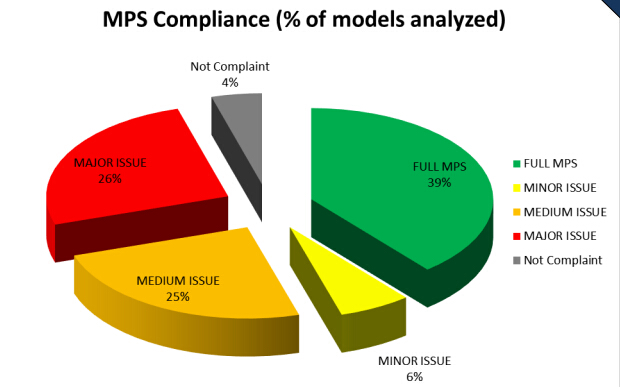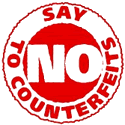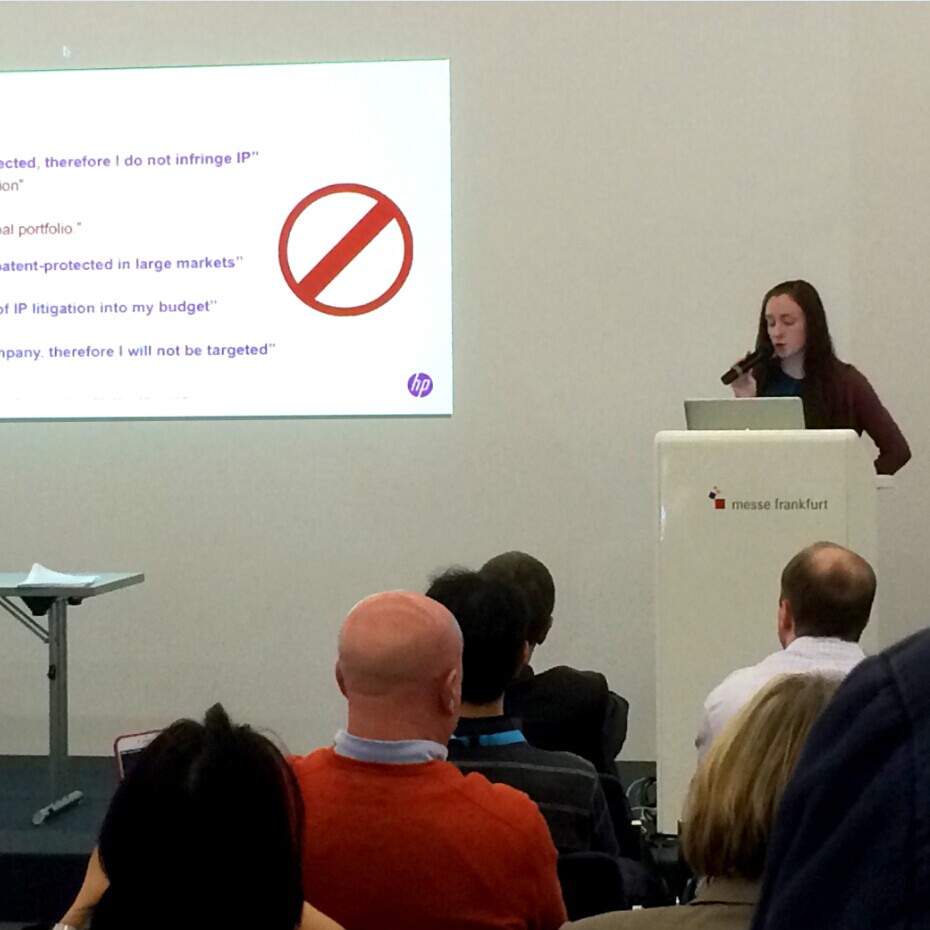MPS Compliant: Analysis of Printer / Copier Models
The analysis focuses on the ability of the printer to provide sufficient data so that an advanced MPS technology can potentially drive the services. The quality of the data provided is ignored on purpose. The analysis works under the assumption that the data is homogenous and accurate. The reader is advised that a high MPS compliant ratio is not enough to ensure a profitable business free from unneeded toner deliveries, and toner waste. It is absolutely recommended to use Nubeprint MPS technology to obtain the best results of an automatic order fulfillment, and a lean management process implementation. This, in short order, will result in higher margins for your MPS and cost per copy businesses. The analysis does not differentiate the type of device as long as the document output is homogeneous: an office printer or copier, no matter what its size is (letter, A4, A3, A0…). As a consequence, the Report includes laser printer, inkjet and solid ink printers, ribbon (including label printers) or large format printers (LFP). This new edition includes products from 41 manufacturers. Though the number of LFP and Ribbon equipment is small compared to the office printers and copiers, their management is a real burden to the customer. The demand for the MPS service provider to handle these devices is high, and is a way for them to gain new customers and protect existing ones by being the sole service provider for printing equipment in each account.
Population
The analysis was conducted with 2,400 document output device models selected among the most commonly found in the office market, expanding the previous edition again by 300 models. For the purposes of this Report, a model is defined as a “family” of products of a manufacturer. If a family is composed by 5 models, the Report is bundling them into one. As a consequence, the Report includes over 10,000 different manufacturer models. The models analyzed are classified in 6 different types: monochrome printers, color printers, monochrome MFP (multifunctional including copiers), color MFP, large format printers (LFP) and ribbon printers. 61% of the population analyzed is MFP while 34% are printers, 4% are LFP and 1% is ribbon. Overall 47% is color and the remaining 53% is monochrome, excluding LFP and ribbon.
 Figure 1
Figure 1
 Figure 2
Figure 2
Market compliance
Overall
Overall and compared to previous reports, the distribution of models based on their compliance to a managed print service business does not change significantly. The population analyzed shows that the vast majority of the printer models in the market have a lack of compliance to some degree. Less than 4 out of 10 (39%) are compliant to an MPS contract. Only a limited number of them (4%) have to be excluded from an MPS contract due to the fact that it is simply not possible to proactively manage the needs of these devices from remote (see Figure 4). LFP and ribbon printers are the biggest contributors to non-compliant MPS printers, as can be deducted from the graph on Figure 5.
 Figure 3
Figure 3
All except the non-compliant devices require an advanced MPS management technology that guaranties that the MPS service is handled hassle free for the end-customer, and efficiently by the service provider. Indeed, 57% of the printer and copier models experience significant limitations that cause terrible headaches in the MPS service organizations: false cartridge alerts, lack of alerts for some type cartridges are just some examples. The problem becomes worse when using cartridges from different manufacturers. Nubeprint Enterprise is the only yield management tool that automatically solves these problems, increasing the satisfaction of the endcustomer, relaxing the service desk of the MPS service provider and surpassing the expected profitability of the MPS program.
Per type of device
The simple function printers have the highest degree of MPS compliance: around 40% of these devices are all full MPS, compared to 30% of MFPs and copiers, and just 10% for Ribbon and large format. The color in a printer seems to be synonymous of better compliance of both printers and copiers. While only 10% of color devices have major issues to MPS compliance, the monochrome devices with major issues are between 50 and 35% of total.
 Figure 4
Figure 4
The largest percentage of non-compliance is for Ribbon printers (25%) and to a less extent for large format (18%). This may be because traditionally these devices have been connected to one single PC workstation. But nowadays reality is very different. These printers are connected to the LAN. The advantage for both the customer and the service provider in managing them from remote are evident. The manufacturer will make a good decision if he improves them to become better MPS compliance. Overall, LFP low-compliance ratio includes 90% of the devices, and slightly less in the case of Ribbon (87%).
Per manufacturer
The analysis of compliance per manufacturer shows a very heterogeneous market. Some manufacturers have increased their compliance with new versions of firmware. But in some cases, such versions have gone in the opposite direction; causing issues to the MPS service provider that did not have these issues until they updated the printer’s firmware. The chart provides the MPS compliance for the different models analyzed for each manufacturer. The greener the bar of a manufacturer, the more MPS friendly are its printers and copiers. There is no significant difference if the manufacturer origin is from the copier industry or printer industry.
 Figure 5
Figure 5
 Figure 6
Figure 6
The radar graph determines how each manufacturer is positioned compared to others. The Index considers each printer model limitation based on how it influences the efficiency and the profitability of an of MPS services. The delivery of MPS services focuses on 3 aspects: the quality of the service, the control of the costs and their follow-up (workload in the service desk). The goal of the service provider is to obtain the highest profitability and automation of all recurrent tasks as a way to gain efficiency and to control the quality of the service to the customer.
The closer a manufacturer’s index is to the center of the grid, the more MPS compliant its products are, and the more suitable they are for an MPS portfolio. The Index is only calculated for those manufacturers for which a sufficient number of models have been tested.
(Source: Nubeprint)






Leave a Comment
Want to join the discussion?Feel free to contribute!